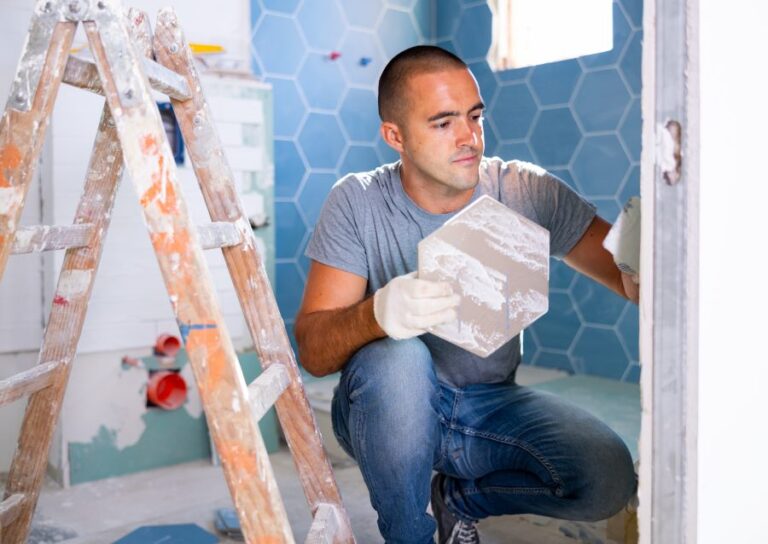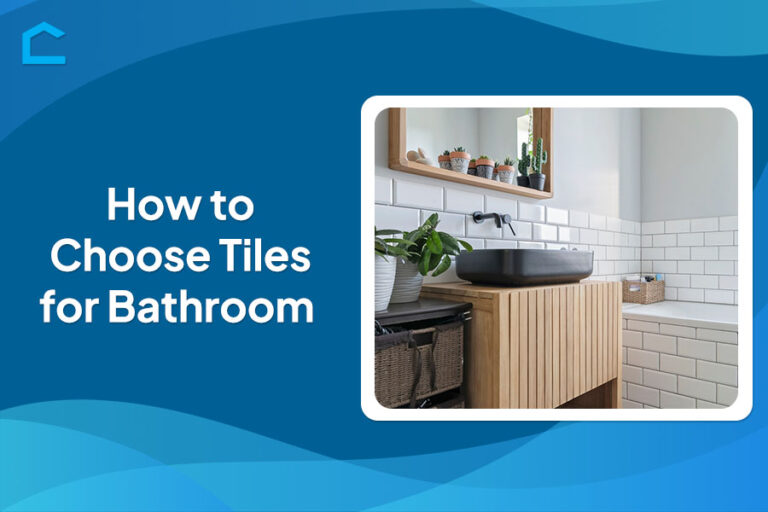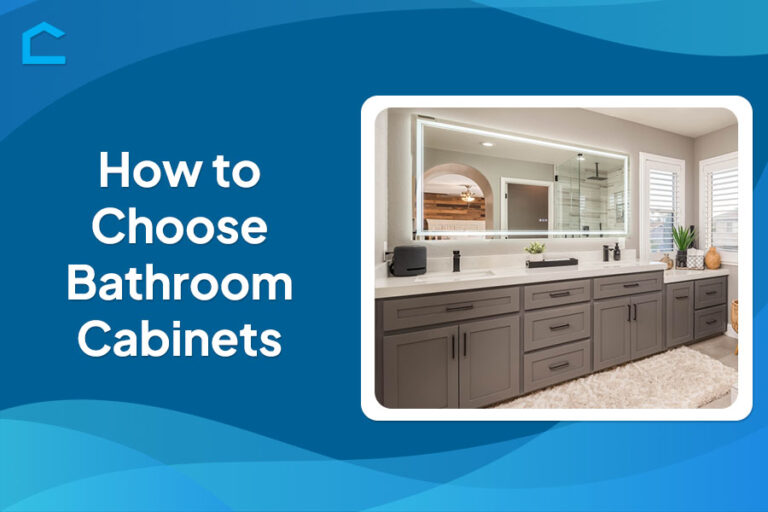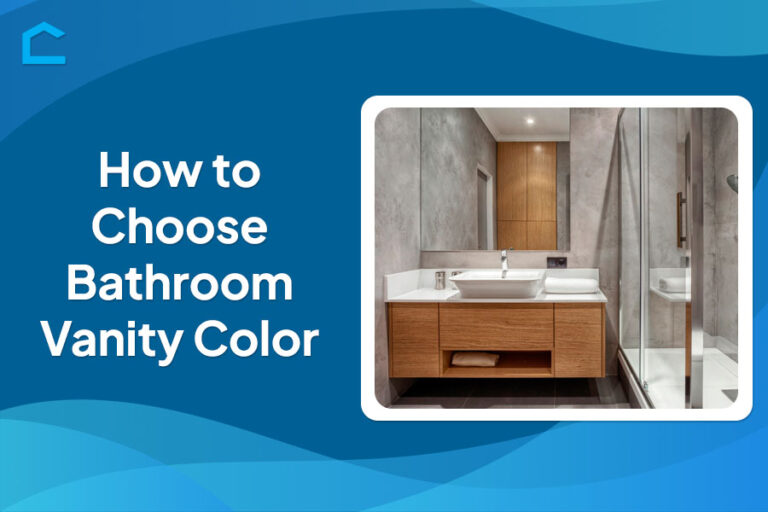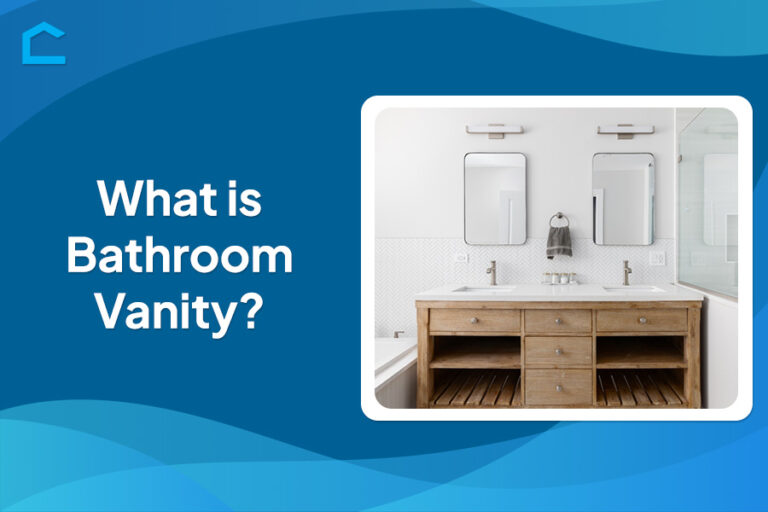Picture a bathroom that seamlessly combines elegance with practicality, where every element is designed to enhance your comfort and style. Bath remodeling offers a unique opportunity to transform your ordinary space into a luxurious haven tailored to your preferences.
In this article, we will explore the key elements of a successful bath remodeling project. We’ll guide you through the latest design trends, offer tips for choosing materials and fixtures, and provide insights into optimizing your space for style and function.
From understanding the planning process to navigating potential challenges, we’ll cover everything you need to know to create a bathroom that meets your needs and exceeds your expectations. Get ready to discover how a thoughtful remodel can transform your bathroom into a luxurious retreat and enhance your everyday living!
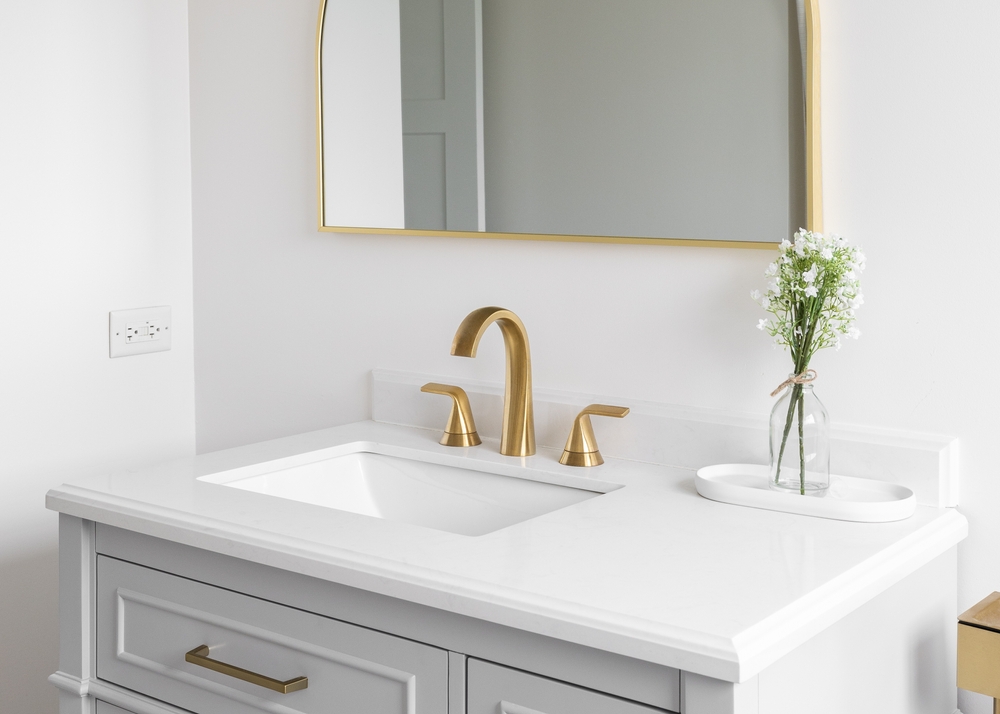
Reasons to Remodel Your Bathroom
Improving functionality and aesthetics
A bathroom remodel is important because it allows you to significantly enhance the space’s functionality and appearance. Optimizing space utilization can make even the smallest bathrooms feel larger and more efficient. For example, installing floating vanities, corner sinks, or wall-mounted toilets frees up valuable floor space, which can make the room feel less cramped.
Smart storage solutions, such as recessed shelving or over-toilet cabinets, are crucial for maximizing vertical space and reducing clutter, making the bathroom more organized and accessible. For instance, modern faucets and dual-flush toilets can streamline your daily routines and conserve water, contributing to convenience and sustainability.
Additionally, enhancing lighting and ambiance with layered lighting options and strategically placed mirrors can transform the bathroom’s overall feel. Proper lighting and reflective surfaces make the space brighter and more inviting, significantly improving your daily experience.
Updating outdated designs
Modernizing your bathroom design is crucial for enhancing the space’s functionality and boosting the overall appeal of your home. Refreshing the color scheme is a simple yet impactful step; lighter, brighter tones can make the room feel more inviting and spacious than outdated, dark colors.
Updating fixtures with contemporary finishes, such as chrome or brushed nickel, also plays a key role in modernizing the space. These sleek options look stylish and offer durability and easy maintenance.
Incorporating modern design elements like large-format tiles, frameless glass shower doors, or sleek vanities further aligns the space with current trends, ensuring it feels fresh and functional. These updates collectively contribute to a bathroom that is visually appealing and more enjoyable to use.
Increasing home value
A well-executed bathroom remodel can greatly enhance your home’s value. To maximize return on investment, prioritize improvements that offer the most significant impact, such as upgrading fixtures and enhancing functionality.
Investing in quality, durable materials boosts long-term value and attracts discerning buyers. Additionally, features that create a spa-like experience—like soaking tubs, steam showers, or heated floors—can make your home stand out in the real estate market.
That said, it’s essential to balance your style and broad appeal. This approach ensures that while the remodel reflects your taste, it resonates with many potential buyers, making your home more attractive and marketable.
Enhancing energy efficiency
Remodeling your bathroom is an excellent opportunity to boost energy efficiency and overall functionality. You can reduce water usage and lower utility bills by installing water-saving fixtures such as low-flow toilets and efficient faucets. To further enhance efficiency, improving ventilation with high-quality exhaust fans helps prevent mold and mildew while ensuring better air quality.
Furthermore, switching to energy-efficient LED lighting cuts down on energy consumption and provides superior, long-lasting illumination. Consider incorporating skylights or larger windows to maximize natural light, reducing reliance on artificial lighting. Together, these upgrades improve your bathroom’s efficiency and create a brighter and more inviting space.
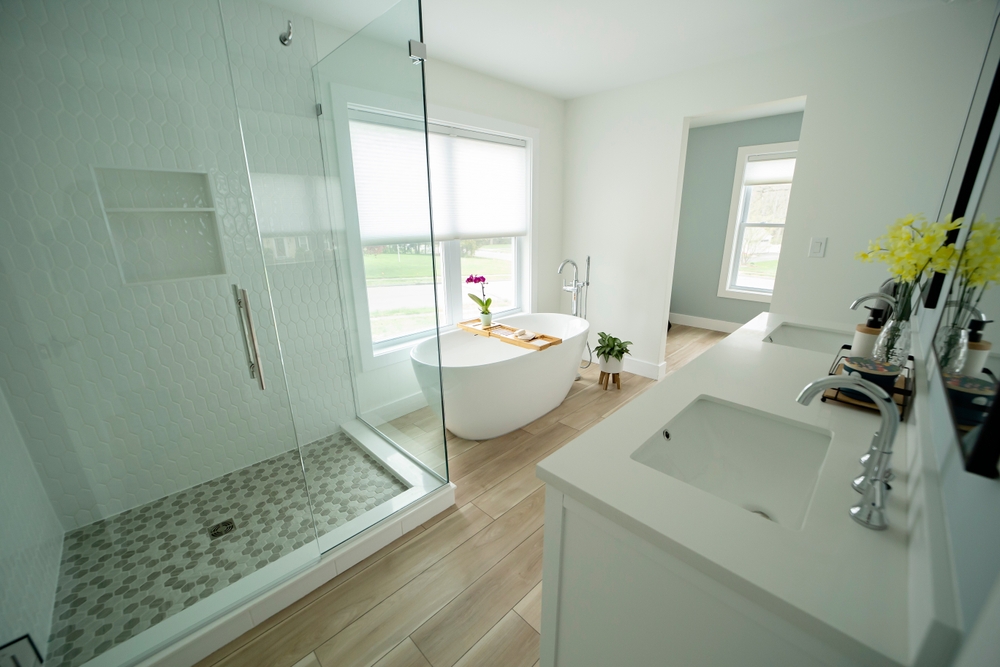
Adapting to lifestyle changes
As life changes, so do your needs regarding living spaces. A bathroom remodel offers the perfect opportunity to tailor the space to fit your current lifestyle. For those planning to age in place, consider incorporating features like walk-in showers, grab bars, and comfort-height toilets to enhance accessibility and safety.
Family-friendly upgrades, such as double sinks or tub-shower combinations, can streamline morning routines and better accommodate children’s needs. Personalizing the space with custom storage solutions, technology integration, or a dedicated makeup vanity can further enhance your daily experience.
Moreover, adding practical elements like a built-in hamper can make the bathroom more functional and uniquely yours. By adapting your bathroom to meet your lifestyle needs, you create a comfortable and practical space that will serve you well for years.
Planning Your Bath Remodel
Careful planning is essential for success when embarking on a bathroom remodel. This process involves several key steps, each contributing to a well-executed project that meets your needs and budget. Here are the necessary steps:
Setting a budget
The first step in planning your bath remodel is establishing a realistic budget. Evaluate your finances to establish a comfortable spending limit.
Also, research the costs of materials, labor, and any potential unexpected expenses. It’s wise to allocate a 10-20% contingency fund for unforeseen issues.
If necessary, explore financing options, but be cautious of interest rates and repayment terms. Finally, prioritize your spending by differentiating between essential upgrades and desirable yet optional features.
Defining needs and wants
Assess your current bathroom’s shortcomings to envision effective improvements. Begin by pinpointing functional issues like inadequate storage, poor lighting, or outdated fixtures. Additionally, consider future needs, like incorporating accessibility features to support aging.
With these considerations in mind, create a list of essential elements and desirable features. This approach will guide your design decisions, helping you address critical concerns, stay within budget, and achieve a well-balanced and functional remodel.
Creating a wish list
Once you’ve identified your needs, create a detailed wish list for your new bathroom. This list should encompass both functional and aesthetic elements, from specific fixtures to preferred design styles. Take the time to research various product options, comparing prices, quality, and warranties.
Visit showrooms to experience materials firsthand and get a feel for their texture and appearance. Organize your wish list by prioritizing items based on their importance and your budget constraints. This list will act as a roadmap for your discussions with designers and contractors, helping to ensure that your vision is clearly communicated and effectively realized.
Researching styles and trends
Explore different bathroom design styles to find the one that best matches your taste and enhances your home. While staying updated with current trends can offer inspiration, prioritize classic elements that will remain stylish over time. Pay attention to color schemes, material choices, and layout options to create a cohesive look.
In addition, keep yourself informed by following design blogs, attending home shows, and browsing magazines. This ongoing research will help you convey your vision to professionals and make well-informed decisions throughout the remodeling process.
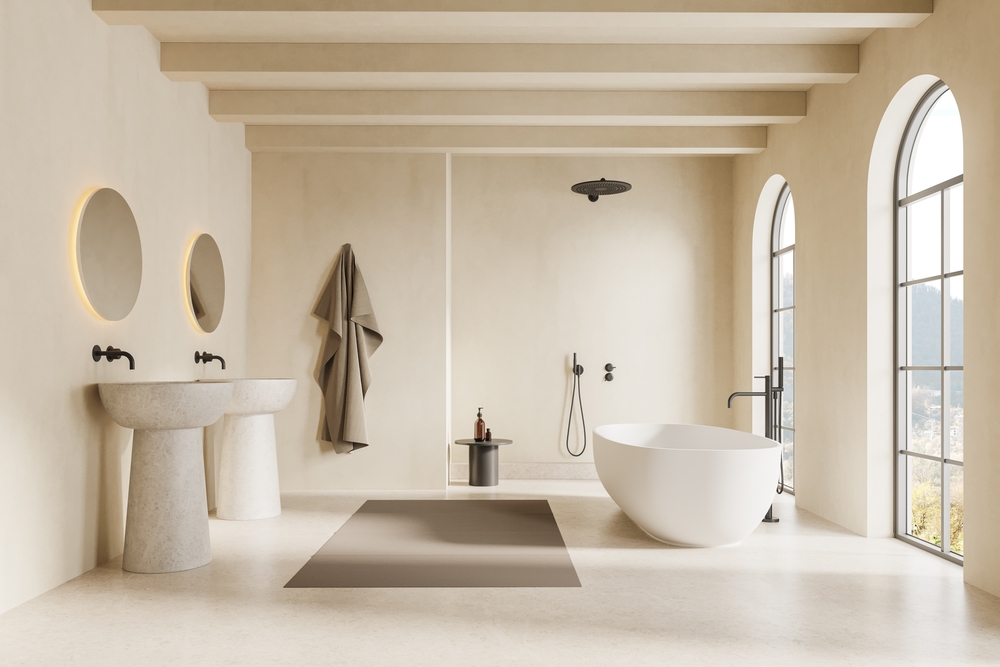
Consulting with professionals
Seek expert guidance to refine your plans and ensure a successful remodel. Begin by interviewing multiple bathroom designers and contractors, carefully reviewing their portfolios and checking references.
Discuss your ideas, budget, and timeline with these professionals, and remain open to their suggestions. Their insights can offer valuable perspectives and creative solutions.
Moreover, ensure that any hired professionals are licensed, insured, and experienced in projects similar to yours. Their expertise will be essential in transforming your vision into a practical, beautiful, and functional bathroom.
Design Considerations
When planning a bathroom remodel, several key design elements must be considered to ensure a successful outcome. Begin by optimizing the layout to maximize space and address any plumbing constraints. The choice of materials is equally important; selecting the right tiles, fixtures, and vanities will balance aesthetics and durability.
In addition to material selection, incorporating energy-efficient appliances and fixtures can reduce utility costs while enhancing functionality. Effective lighting design is also essential; a combination of task, ambient, and accent lighting will ensure the space is well-lit and versatile.
Color schemes and finishes should be chosen carefully to set the desired mood and complement the home’s overall design. To further modernize the space, consider integrating smart technology such as touchless faucets or smart mirrors.
Process of Bath Remodeling
Initial consultation and design phase
The remodel begins with an essential meeting between you and a design professional. You’ll discuss your vision, needs, and preferences for the new bathroom. The designer will ask about your lifestyle, storage requirements, and aesthetic tastes.
During this phase, you’ll explore various layout options and material choices. The designer may present mood boards, 3D renderings, or sample materials to help you visualize the end result. This collaborative process ensures your new bathroom will be both functional and visually appealing.
Budgeting and planning
With your design in mind, the next step is to develop a detailed financial blueprint for your project. This blueprint should outline the costs for labor, materials, and any potential contingencies. By doing so, you can prevent budget overruns and set realistic expectations.
During this phase, you’ll also create a comprehensive timeline. This timeline will encompass every remodel stage, from demolition to the final touches. Effective planning at this stage helps minimize disruptions to your daily life throughout the renovation process.
Demolition and removal
The transformation truly begins as the existing bathroom is carefully dismantled. Old fixtures, tiles, and outdated elements are removed, leaving a blank canvas for your new design. During this phase, hidden issues such as water damage or faulty wiring may be uncovered.
Proper disposal of old materials is a crucial consideration during demolition. Many items can be recycled or donated, which helps reduce waste and may offset some costs. This phase also provides an opportunity for a thorough inspection of the underlying structure.
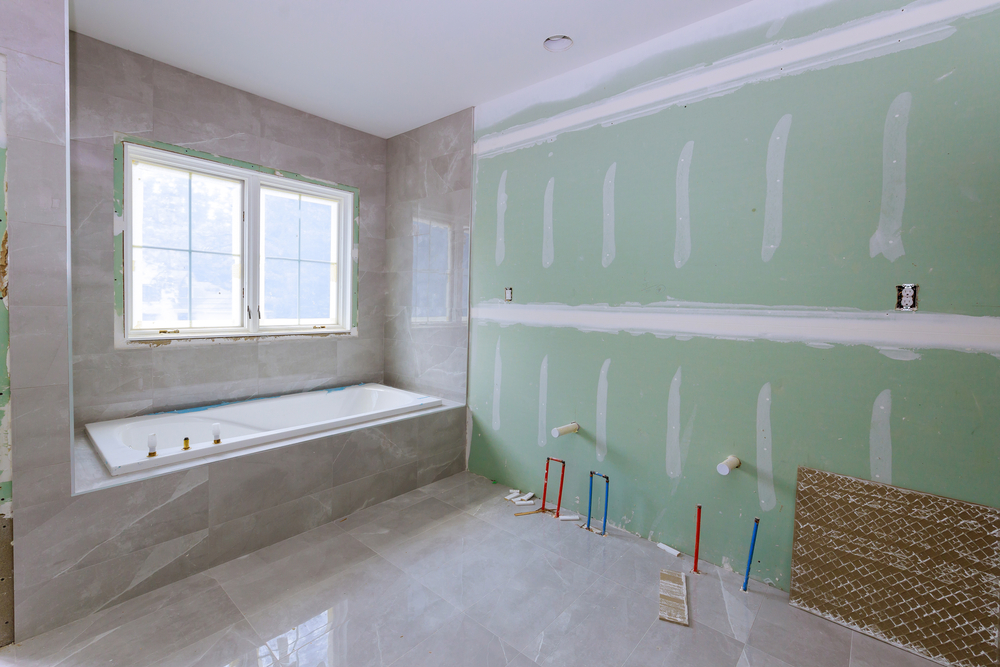
Plumbing and electrical work
Once the space is cleared, attention turns to the essential systems that will support your new bathroom. Plumbing might be updated or rerouted to accommodate new fixture locations, and this is also the ideal time to address any existing plumbing issues.
In parallel, electrical systems are upgraded for enhanced safety and functionality. New circuits may be introduced to support heated floors or high-powered appliances. Additionally, ventilation systems will be installed to ensure your new bathroom remains comfortable and mold-free.
Installation of new fixtures and materials
As your bathroom begins to take shape, new elements are installed with precision. Tubs, showers, and toilets are carefully positioned in their designated spots. Tiles are laid according to your chosen design, and skilled craftsmanship ensures a perfect fit.
Next, cabinets and countertops are installed, followed by sinks and faucets. Each step brings your vision closer to reality. During this phase, rigorous quality control is essential to ensure that all elements meet aesthetic and functional standards.
Painting and finishing touches
As the walls come alive with your chosen hues, color breathes new life into your space, marking a transformative stage where the bathroom’s true character emerges. With proper preparation and high-quality paint, this finish is designed to last, ensuring that vibrancy lasts over time.
Once the painting is complete, attention shifts to the final details that bring the design to life. Hardware is installed on cabinets and doors, mirrors are carefully positioned, and lighting fixtures are set in place. These finishing touches seamlessly tie the entire look together, creating a cohesive and polished appearance.
Final inspection and walkthrough
As the project approaches its final stages, a comprehensive inspection confirms that all work complies with building codes and meets quality standards. During this process, any minor issues or necessary adjustments are quickly identified and resolved.
Next, you’ll walk through your new bathroom with the project manager, allowing you to review every detail and ensure everything aligns with your expectations. This walkthrough also provides an opportunity to discuss and implement any final touches or tweaks, ensuring complete satisfaction with the finished product.
Choosing a Bath Remodeling Company
Key factors to consider
Licensing and certification
Always verify a company’s credentials before hiring. Proper licensing indicates that the company meets local regulations, while certifications reflect its expertise and commitment to industry standards.
Don’t hesitate to ask for proof of these credentials; reputable companies will readily provide this information. Remember, working with a properly licensed and certified company safeguards you both legally and financially.
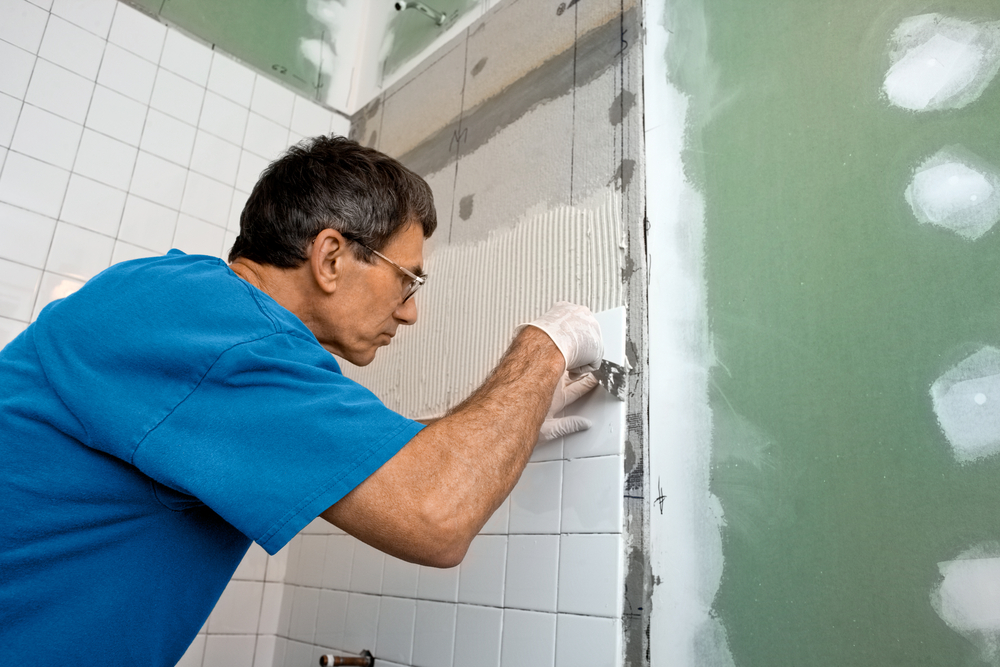
Experience and portfolio
When searching for companies to handle bath remodeling, focus on those with a solid track record. Review their portfolios to gauge the quality and variety of their work, as this will give you a clearer idea of their expertise. Experienced remodelers are typically better at managing unexpected issues that may arise during the project.
It’s also important to ask about their experience with similar projects. A company that has completed bathrooms aligned with your vision will likely be more capable of meeting your needs. Their portfolio should feature a range of styles and solutions, reflecting their adaptability and skill.
Response time and availability
Effective communication is crucial for a seamless remodeling project. Start by evaluating how promptly the company responds to your initial inquiries, as this is often a good indicator of their responsiveness during the project.
Additionally, discuss their current workload and availability to ensure they can meet your preferred timeline without overcommitting. A company that’s too busy may not be able to give your project the attention it deserves.
Reviews and testimonials
Client feedback is essential for assessing a company’s performance. To get a comprehensive view, read reviews from multiple sources and pay attention to how the company addresses positive and negative feedback.
For a deeper understanding, request references from past clients. Speaking with previous customers can provide valuable insights into the company’s work ethic and project results. Ask about the process and outcomes to better understand their effectiveness.
Insurance coverage
Proper insurance is essential for protecting yourself from liability during a remodeling project. Verify that the company you choose has liability and workers’ compensation insurance to ensure comprehensive coverage. This protection is crucial for your peace of mind and financial security.
Before signing any contracts, request proof of insurance coverage. A reputable company will be more than willing to provide this documentation. Working with an uninsured contractor can expose you to significant risks, including potential lawsuits or damages.
Technology and equipment
Modern tools and technology can greatly enhance efficiency and outcomes. It’s worth asking how the company integrates new technologies into their workflow. Advanced equipment typically results in more precise work and superior finishes.
Also, inquire about their design process and whether they utilize 3D modeling or other visualization tools. These technologies can provide a clearer view of the proposed design before any work starts. A company investing in modern tools often strongly commits to quality and innovation.
Questions to ask potential companies
Creating a list of questions is essential for gathering important information. Begin by asking about their experience, project management process, and their approach to handling unexpected issues. This will help you gauge their level of expertise and problem-solving abilities.
Next, inquire about warranties, project timelines, and their strategies for minimizing disruption to your daily life. Their responses will provide insight into their commitment to customer satisfaction. Additionally, be sure to ask about their use of subcontractors and the vetting process they follow.
A reputable company will be open to your questions and offer clear, detailed answers. Their responses can reveal much about their professionalism and expertise. To aid in comparing companies later, take notes during these conversations.
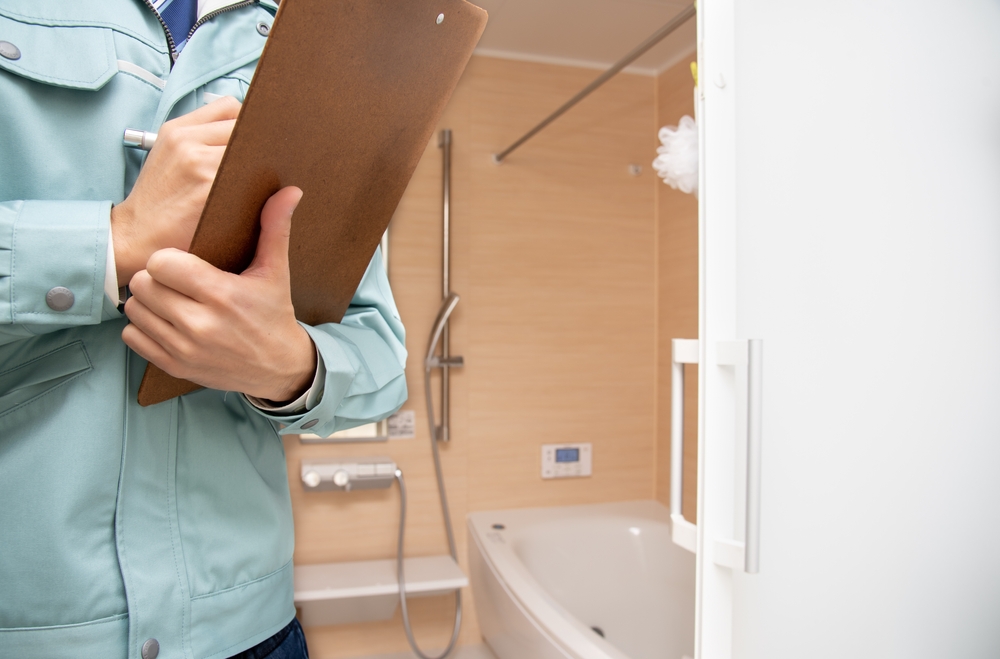
DIY vs. Professional Bath Remodeling
When considering a bath remodel, many of you often choose between DIY and professional services. DIY can be a practical option for small updates and cosmetic changes, such as painting, replacing hardware, or refreshing decor. These projects are cost-effective and provide a sense of personal achievement.
However, opting for professional services comes with notable advantages. Experts bring extensive knowledge of building codes, adept problem-solving skills, and efficient project management. Their experience and access to specialized tools often result in faster completion and superior quality.
In contrast, DIY endeavors can encounter challenges like a lack of expertise, unexpected time delays, and hidden costs. Inexperienced DIYers might overlook underlying issues or make costly mistakes. Ultimately, the choice between DIY and professional help hinges on the project’s complexity, your skills, and the desired outcome.
Cost Considerations and Budgeting
When planning a bathroom remodel, it’s essential to manage costs and budget effectively. Start by categorizing your expenses into materials, labor, and permits. Materials include both major items like tiles and fixtures and smaller necessities. Labor costs cover various trades, while permit fees vary depending on location.
To stay within budget, prioritize your spending and look for deals on materials. Consider handling simpler tasks yourself to save on labor costs. Additionally, explore financing options such as home improvement loans, credit cards, and potential incentives or rebates for energy-efficient upgrades.
As mentioned, it’s also important to set aside a contingency fund of 10-20% of your total budget for unexpected expenses. Identify potential risk areas and plan for how you’ll manage any budget overruns. By carefully planning and considering these factors, you can effectively manage your remodel costs and achieve your renovation goals within your financial constraints.
Maximizing Space and Storage
Maximizing space and storage in a bathroom remodel is essential for creating a functional and organized area. To achieve this, consider implementing clever storage solutions such as built-in shelves, recessed medicine cabinets, and over-the-toilet units.
Furthermore, space-saving fixtures and designs, such as wall-mounted toilets and sinks, corner fixtures, and shower-tub combinations, help to make the most of a small bathroom’s layout. Additionally, vertical space with tall cabinets and over-the-door organizers can optimize storage.
Incorporating hidden storage in unexpected places and designing multipurpose areas also contribute to more efficient use of space. Doing this, even the smallest bathrooms can be transformed into more spacious and organized environments, blending functionality with aesthetic appeal while ensuring every item has its designated place.
Sustainable and Eco-Friendly Remodeling
Materials and fixtures
Sustainable and eco-friendly bathroom remodeling offers numerous benefits for homeowners and the environment. By choosing materials such as recycled glass tiles, reclaimed wood, or eco-friendly options like bamboo and cork, you can significantly reduce the environmental impact of your project.
Incorporating water-efficient fixtures, such as low-flow toilets, efficient faucets, and showerheads, not only helps conserve water but also lowers utility bills. This holistic approach ensures that your remodeling project is environmentally responsible and cost-effective.
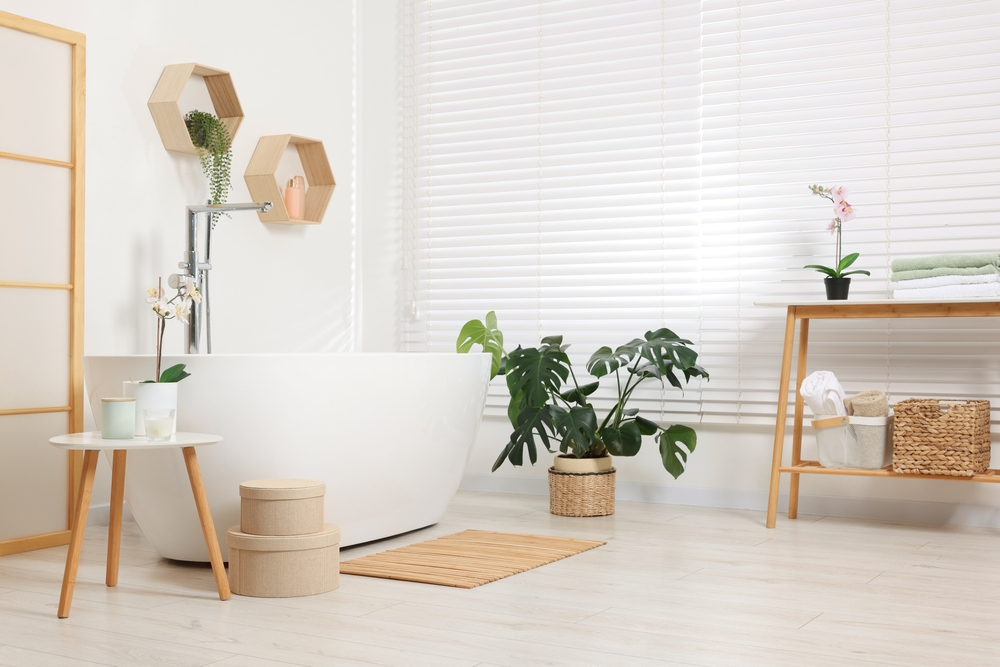
Benefits and practices
When remodeling, implementing waste reduction and recycling practices—such as careful deconstruction and proper material sorting—helps minimize landfill waste. By adopting green remodeling practices, you reduce your carbon footprint, conserve resources, and improve indoor air quality through non-toxic materials, contributing to better health.
Financially, this approach can lead to lower utility costs, increased home value, and potential tax incentives. Overall, a sustainable bathroom remodel enhances your space’s beauty and functionality while supporting a healthier planet and home environment.
Common Challenges in Bath Remodeling
Delays and unexpected issues
Bathroom remodels often encounter delays and unforeseen problems, with hidden water damage being a common culprit. Outdated plumbing can also lead to setbacks. These issues can extend project timelines and increase costs.
To prepare for potential challenges, it is essential to build a buffer into both your schedule and budget. This added flexibility can help alleviate stress when surprises occur. Working closely with your contractor can ensure that issues are addressed promptly, keeping your project on track.
Living without a bathroom
Remodeling your bathroom can pose significant logistical challenges. To navigate these, plan alternative arrangements well in advance. You might consider staying with friends or family during key renovation stages. Some homeowners opt to rent portable toilets or use gym facilities for showers.
Additionally, set up a temporary hygiene station in another part of your home, stocked with essentials such as hand sanitizer and wet wipes. If possible, schedule the remodel for a season when you can enjoy more time outdoors, minimizing the impact on your daily routine.
Communication with contractors
Establish regular check-ins with your contractor to discuss progress, upcoming stages, and any concerns to ensure everything goes smoothly.
Also, keeping a written record of all decisions and changes helps prevent misunderstandings. Don’t hesitate to ask questions or request clarification—an attentive contractor will value your involvement and strive to keep you informed throughout the process.
Trends in Bath Remodeling
Current design trends
Modern bathroom design emphasizes clean lines and minimalism, fostering spa-like atmospheres that have become increasingly popular. A key element of this trend is the use of freestanding tubs as striking focal points, which, along with open showers featuring glass enclosures, enhances the sense of spaciousness in the room.
Complementing these design choices, color trends now favor calming neutrals accented by bold walls. This palette is often enriched by biophilic design elements, such as the addition of plants or nature-inspired patterns, which bring a touch of the outdoors inside. Moreover, vintage-inspired fixtures are coming back, seamlessly blending nostalgia with modern functionality to complete the look.
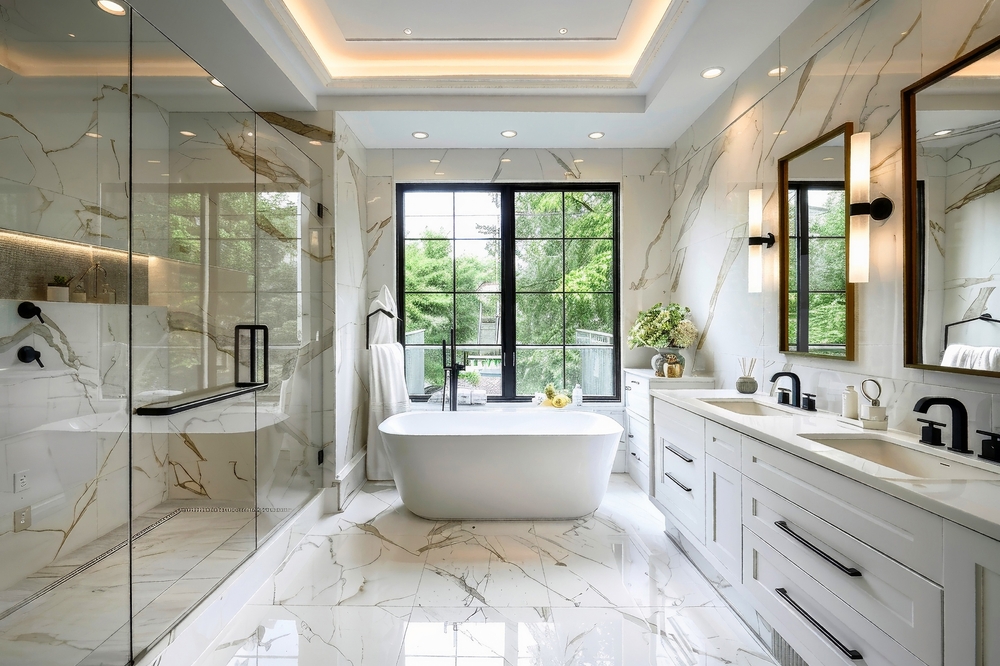
Innovations in bathroom technology
Smart technology revolutionizes bathroom experiences by integrating innovative features that blend luxury and practicality. Digital shower controls offer precise temperature and flow adjustments, enhancing the showering experience with personalized comfort. Smart toilets add to this by providing heated seats and self-cleaning functions, making daily routines more convenient.
In addition to these advancements, touchless faucets improve hygiene and water efficiency, while LED mirrors equipped with built-in lighting and defoggers enhance visibility and style. Some mirrors even come with Bluetooth speakers, adding an element of entertainment. To complete the transformation, heated floors offer cozy warmth and can be easily controlled through smartphone apps.
Popular materials and finishes
Durable, low-maintenance materials are increasingly popular in modern design. Porcelain tiles that mimic the appearance of natural stone or wood have become widely favored, as large-format tiles minimize grout lines and contribute to a sleek, seamless look. Quartz countertops are also in demand, offering both style and effortless upkeep.
In terms of fixtures and hardware, matte black options lend a contemporary edge, while brushed gold and copper finishes introduce warmth and sophistication. For those interested in sustainable design, recycled glass tiles and reclaimed wood elements are trending, merging eco-friendliness with unique visual appeal.
Frequently Asked Questions
How long does a typical bathroom remodel take?
The duration of a bathroom remodel can vary significantly based on the scope of the work. A straightforward refresh might take just 1 to 2 weeks, whereas a full renovation could extend to 4 to 6 weeks. Custom elements or structural changes may further lengthen the timeline.
It’s also important to anticipate potential delays, as unexpected issues can arise during demolition. It’s wise to include a buffer in your estimated timeline to account for these possibilities.
What’s the average cost of a bathroom remodel?
Bathroom remodels costs can range widely, typically from $10,000 to $30,000. The final price depends on factors like size, materials chosen, and extent of changes. High-end remodels with luxury finishes can exceed $50,000.
Remember, the cheapest option isn’t always the best value. Investing in quality materials and skilled labor can result in a bathroom that lasts longer and performs better. Always get detailed quotes from multiple contractors to compare.
Do I need a permit for a bathroom remodel?
Permit requirements can differ based on location and the scope of your project. Typically, cosmetic changes, such as painting or replacing fixtures, do not require permits. However, modifications to plumbing, electrical systems, or structural elements often do.
To ensure compliance, check with your local building department for specific requirements. Failing to obtain necessary permits can result in fines and complications when selling your home.
Can I remodel my bathroom in stages to spread out costs?
Remodeling in stages is possible and can help manage costs. Start with essential updates like fixing leaks or replacing outdated fixtures. Then, move on to cosmetic changes like new tiles or paint.
Yet, be aware that this approach may lead to some inefficiencies. You might have to redo certain work or live with a partially finished bathroom for a while. Discuss this option with your contractor to create a sensible staged plan.
Is DIY always cheaper than hiring professionals?
DIY projects can be a cost-effective way to save on labor expenses, but they are not always the most economical option in the long run. Professionals offer expertise that helps avoid costly mistakes and often have access to trade discounts on materials.
It’s important to weigh the value of your time and the potential for errors. A poorly executed DIY project could be more expensive to repair than hiring professionals from the outset. Professional assistance is crucial for complex tasks, such as plumbing or electrical work, ensuring safety and compliance with building codes.
Locations
California
- Los Angeles
- San Diego
- San Jose
- San Francisco
- Fresno
- Sacramento
- Long Beach
- Oakland
- Bakersfield
- Anaheim
- Santa Ana
- Riverside
- Stockton
- Chula Vista
- Irvine
- Fremont
- San Bernardino
- Modesto
- Fontana
- Oxnard
- Moreno Valley
- Glendale
- Huntington Beach
- Santa Clarita
- Oceanside
- Garden Grove
- Rancho Cucamonga
- Santa Rosa
- Ontario
- Elk Grove
- Corona
- Lancaster
- Palmdale
- Hayward
- Salinas
- Pomona
- Sunnyvale
- Escondido
- Torrance
- Pasadena
- Fullerton
- Orange
- Roseville
- Visalia
- Thousand Oaks
- Concord
- Simi Valley
- Santa Clara
- Victorville
- Vallejo
- Berkeley
- El Monte
- Downey
- Costa Mesa
- Inglewood
- Carlsbad
- Fairfield
- Ventura
- Temecula
- Antioch
- Richmond
- West Covina
- Murrieta
- Norwalk
- Daly City
- Burbank
- Santa Maria
- El Cajon
- San Mateo
- Rialto
- Clovis
- Jurupa Valley
- Compton
- Vista
- Mission Viejo
- South Gate
- Vacaville
- Carson
- Hesperia
- Santa Monica
- Westminster
- Redding
- Santa Barbara
- Chico
- Newport Beach
- San Leandro
- Indio
- Tracy
- Livermore
- Baldwin Park
- Merced
- Chino
- Redwood City
- Lake Forest
- Napa
- Tustin
- Buena Park
- Mountain View
- Lakewood
- San Marcos
Texas
- Houston
- San Antonio
- Dallas
- Austin
- Fort Worth
- El Paso
- Arlington
- Corpus Christi
- Plano
- Laredo
- Lubbock
- Garland
- Irving
- Amarillo
- Grand Prairie
- Brownsville
- McKinney
- Frisco
- Pasadena
- Mesquite
- Killeen
- Carrollton
- Midland
- Waco
- Denton
- Abilene
- Odessa
- Beaumont
- Round Rock
- Richardson
- Pearland
- College Station
- Tyler
- League City
- Wichita Falls
- Allen
- San Angelo
- Edinburg
- Sugar Land
- Mission
- Conroe
- Bryan
- New Braunfels
- Pharr
Florida
- Jacksonville
- Miami
- Tampa
- Orlando
- St. Petersburg
- Hialeah
- Tallahassee
- Port St. Lucie
- Cape Coral
- Fort Lauderdale
- Pembroke Pines
- Hollywood
- Miramar
- Gainesville
- Coral Springs
- Clearwater
- Miami Gardens
- Palm Bay
- Pompano Beach
- West Palm Beach
- Lakeland
- Davie
- Miami Beach
- Plantation
- Sunrise
- Boca Raton
- Deltona
- Palm Coast
- Largo
- Melbourne
New York
- New York City
- Buffalo
- Rochester
- Yonkers
- Syracuse
- Albany
- New Rochelle
- Mount Vernon
- Schenectady
- Utica
- White Plains
- Hempstead
- Troy
- Niagara Falls
- Binghamton
- Freeport
- Valley Stream
- Long Beach
- Rome
- North Tonawanda
Pennsylvania
- Philadelphia
- Pittsburgh
- Allentown
- Erie
- Reading
- Scranton
- Bethlehem
- Lancaster
- Harrisburg
- Altoona
Illionois
- Chicago
- Aurora
- Rockford
- Joliet
- Naperville
- Springfield
- Peoria
- Elgin
- Waukegan
- Champaign
- Bloomington
- Decatur
- Evanston
- Des Plaines
- Berwyn
- Wheaton
- Belleville
Ohio
- Columbus
- Cleveland
- Cincinnati
- Toledo
- Akron
- Dayton
Georgia
- Atlanta
- Augusta
- Columbus
- Savannah
- Athens
North Carolina
- Charlotte
- Raleigh
- Greensboro
- Durham
- Winston-Salem
- Fayetteville
- Cary
- Wilmington
- High Point
Michigan
- Detroit
- Grand Rapids
- Warren
- Sterling Heights
- Ann Arbor
- Lansing
- Flint
- Dearborn
- Livonia
- Troy
New Jersey
- Newark
- Jersey City
- Paterson
- Elizabeth
- Edison
- Woodbridge
- Lakewood
- Toms River
- Hamilton
- Trenton
Virginia
- Virginia Beach
- Norfolk
- Chesapeake
- Richmond
- Newport News
- Alexandria
- Hampton
- Roanoke
- Portsmouth
- Suffolk
Washington
- Seattle
- Spokane
- Tacoma
- Vancouver
- Bellevue
- Kent
- Everett
- Renton
- Federal Way
- Yakima
Massachusetts
- Boston
- Worcester
- Springfield
- Lowell
- Cambridge
- New Bedford
- Brockton
- Quincy
- Lynn
- Fall River
Arizona
- Phoenix
- Tucson
- Mesa
- Chandler
- Glendale
- Scottsdale
- Gilbert
- Tempe
- Peoria
- Surprise
Tennessee
- Nashville
- Memphis
- Knoxville
- Chattanooga
- Clarksville
- Murfreesboro
- Franklin
- Jackson
- Johnson City
- Bartlett
Indiana
- Indianapolis
- Fort Wayne
- Evansville
- South Bend
- Carmel
- Fishers
- Bloomington
- Hammond
- Gary
- Lafayette
Missouri
- Kansas City
- St. Louis
- Springfield
- Columbia
- Independence
- Lee’s Summit
- O’Fallon
- St. Joseph
- St. Charles
- St. Peters
Maryland
- Baltimore
- Columbia
- Germantown
- Silver Spring
- Waldorf
- Glen Burnie
- Ellicott City
- Frederick
- Dundalk
- Rockville
Wisconsin
- Milwaukee
- Madison
- Green Bay
- Kenosha
- Racine
- Appleton
- Waukesha
- Oshkosh
- Eau Claire
- Janesville
Colorado
- Denver
- Colorado Springs
- Aurora
- Fort Collins
- Lakewood
- Thornton
- Arvada
- Westminster
- Pueblo
- Centennial
Minnesota
- Minneapolis
- St. Paul
- Rochester
- Duluth
- Bloomington
- Brooklyn Park
- Plymouth
- St. Cloud
- Eagan
- Woodbury
South Carolina
- Columbia
- Charleston
- North Charleston
- Mount Pleasant
- Rock Hill
- Greenville
- Summerville
- Sumter
- Goose Creek
- Hilton Head Island
Alabama
- Birmingham
- Montgomery
- Mobile
- Huntsville
- Tuscaloosa
Louisiana
- New Orleans
- Baton Rouge
- Shreveport
- Lafayette
- Lake Charles
Kentucky
- Louisville
- Lexington
- Bowling Green
- Owensboro
- Covington
Oregon
- Portland
- Salem
- Eugene
- Gresham
- Hillsboro
Oklahoma
- Oklahoma City
- Tulsa
- Norman
- Broken Arrow
- Edmond
Connecticut
- Bridgeport
- New Haven
- Stamford
- Hartford
- Waterbury
Iowa
- Des Moines
- Cedar Rapids
- Davenport
- Sioux City
- Iowa City
Mississippi
- Jackson
- Gulfport
- Southaven
- Hattiesburg
- Biloxi
Arkansas
- Little Rock
- Fort Smith
- Fayetteville
- Springdale
- Jonesboro
Utah
- Salt Lake City
- West Valley City
- Provo
- West Jordan
- Orem
Nevada
- Las Vegas
- Henderson
- Reno
- North Las Vegas
- Sparks
Kansas
- Wichita
- Overland Park
- Kansas City
- Olathe
- Topeka
New Mexico
- Albuquerque
- Las Cruces
- Rio Rancho
- Santa Fe
- Roswell
Nebraska
- Omaha
- Lincoln
- Bellevue
- Grand Island
- Kearney
West Virginia
- Charleston
- Huntington
- Parkersburg
- Morgantown
- Wheeling
Idaho
- Boise
- Meridian
- Nampa
- Idaho Falls
- Pocatello
Hawaii
- Honolulu
- Pearl City
- Hilo
- Kailua
- Waipahu
Maine
- Portland
- Lewiston
- Bangor
- South Portland
- Auburn
New Hampshire
- Manchester
- Nashua
- Concord
- Derry
- Dover
Rhode Island
- Providence
- Warwick
- Cranston
- Pawtucket
- East Providence
Montana
- Billings
- Missoula
- Great Falls
- Bozeman
- Butte
Delaware
- Wilmington
- Dover
- Newark
- Middletown
- Smyrna
South Dakota
- Sioux Falls
- Rapid City
- Aberdeen
- Brookings
- Watertown
North Dakota
- Fargo
- Bismarck
- Grand Forks
- Minot
- West Fargo
Alaska
- Anchorage
- Fairbanks
Vermont
- Burlington
- South Burlington
Wyoming
- Cheyenne
- Casper
Recent Blog Posts
How Long Does a Bathroom Remodel Take
Embarking on a bathroom remodel can be an exciting yet daunting endeavor for homeowners. As one of the most frequently…
What Are Bathroom Countertops Made Of ?
When it comes to home design and renovation, bathrooms often take center stage as spaces for both functionality and style.…
How Much Does a Jacuzzi Bath Remodel Cost?
The allure of soaking in a state-of-the-art, bubbling bathtub is tempting, but before you dive in, it’s crucial to understand…
How to Save Money on Bathroom Remodel
A bathroom remodel can breathe new life into your home, but it doesn’t have to drain your bank account. With…
How to Choose Bathroom Paint Color
Stepping into a well-designed bathroom can be like entering a personal sanctuary. It’s a space where we begin and end…
How to Remodel Bathroom Tile
Embarking on a bathroom tile remodeling project can breathe new life into one of the most frequently used spaces in…
How to Remodel a Bathroom
Remodeling your bathroom is a fantastic way to refresh your space and enhance your home’s value, whether you dream of…
Bathroom Remodeling Tips
A bathroom remodel project can be both exciting and daunting. This essential space in your home serves as a sanctuary…
How to Replace Bathroom Cabinet
Imagine entering a bathroom where every detail reflects your taste and your storage needs are perfectly met. Replacing your bathroom…
Does Remodeling a Bathroom Increase Home Value?
Bathroom remodels are among the most popular home improvements. Renovating your bathroom can transform it from a mundane space into…
How to Choose Tiles for Bathroom
Your bathroom can feel like a personal retreat, where every detail—from the floor to the walls—reflects your unique style and…
How to Choose Bathroom Exhaust Fan
Proper ventilation is crucial for the bathroom environment. A well-chosen exhaust fan may remove excess moisture, eliminate unpleasant odors, and…
How to Choose Bathroom Mirror
Selecting the perfect bathroom mirror is a decision that can dramatically impact the aesthetics and functionality of your space. This…
How to Choose Bathroom Cabinets
Bathroom cabinets are crucial to your personal oasis’s functionality and aesthetics. As the centerpiece of bathroom storage, they keep your…
How to Choose Bathroom Vanity Color
When it comes to bathroom design, few elements make as significant an impact as the vanity. The color of this…
What Is Bathroom Vanity?
When you step into a modern bathroom, your attention is often drawn to a central fixture that seamlessly blends form…




